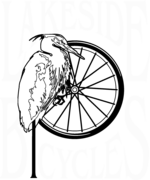A Few Words About Stack and Reach:
Geometry and Fit
Comfort is an essential part of speed, your fit on a bike contributes to your comfort. Competent modern frames have a carefully considered geometry that makes them “fit-system neutral”. Increasingly manufacturers are basing sizes on frame Stack and Reach.
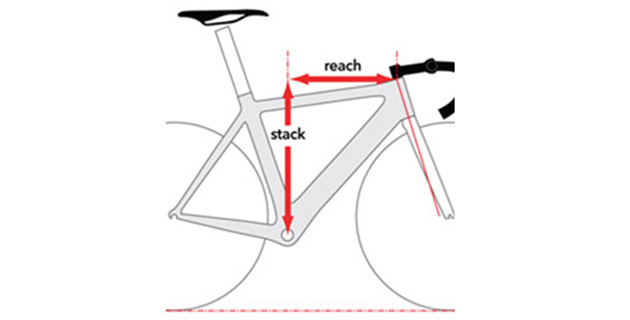
As illustrated above, frame stack is the vertical length from the BB to the top of the headtube. Frame reach is the horizontal length from the BB to the center of the headtube. Same two points (bottom bracket and head tube), just vertical or horizontal distances.
How is this any better than the traditional ways we've sized bike all these years?
Your seat and handlebar locations relative to the bottom bracket define your position. By employing Stack and Reach manufacturers are not suggesting a different fit, they are suggesting a different way to look at frame size.
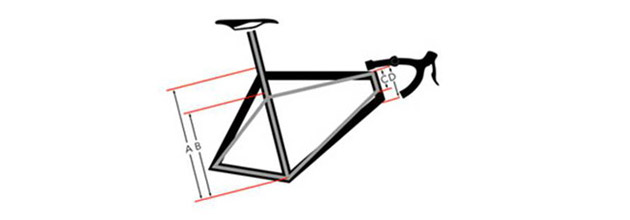
Seat tube
Frame size used to be defined by seat tube length.
Seat tube length doesn’t define fit. The grey and black frames above have the same fit, but different seat tube lengths. In other words, "B" can be shorter than "A" and you just raise the seat post to your saddle height.
Head tube
Look at the head tube length. Since handlebar height has a smaller window of adjust-ability than seat height, it is sometimes recommend to compare head tube lengths. But as you can see (grey frame), if the fork is designed longer (or shorter), then for the same position, the head tube gets shorter (or longer) from "below." Fork crown height, BB drop, and internal/external bearings all affect head tube length. "C" can be shorter than "D" and your position is the same as long as the fork, etc. is correspondingly longer.
Top tube
Take a look at the image below. You can see that, as long as dimensions of your seat post and saddle rails cooperate, different top tube lengths can still put your handlebars and seat in the same position. This means that the top tube length you need depends on the seat tube angle you have.
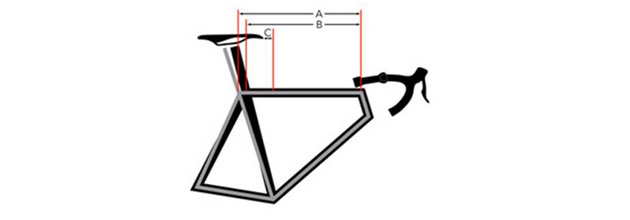
So seat tube, head tube and top tube lengths are unreliable indicators of fit which explains the rise of frame Stack and Reach as a fitting tool.
Plotting stack & reach
Plotting stack and reach numbers for a size run shows how well the various sizes serve a range of riders. Plotting frame stack & reach Involves putting the bottom bracket at the origin (0,0) and noting where the top of the head tube lands.
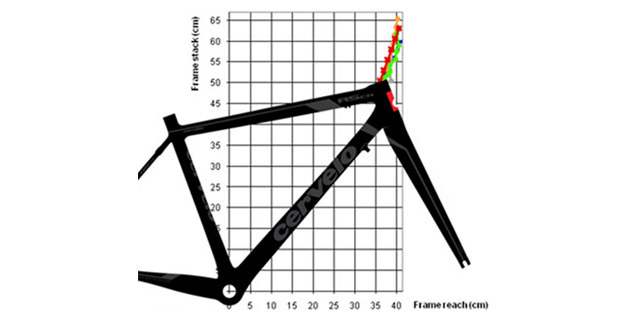
Here's what it looks like when we zoom in on the area near the top of the head tube:
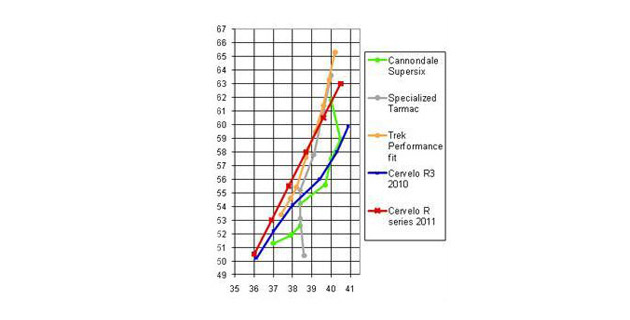
Plotting the stack and reach for several brands shows that not all geometries make sense. Sometimes going to a bigger frame actually moves the head tube CLOSER to the rider. See the green and grey lines above.
Why most small frames don't fit
Plotting stack and reach can explain why some small bikes sometimes don’t fit well. The typical size range below shows that the three smallest sizes do not bring the head tube any closer to the rider. Only the seat tube is steeper (hence the maker can publish a shorter top tube length), but a different offset seat post would have done the same.
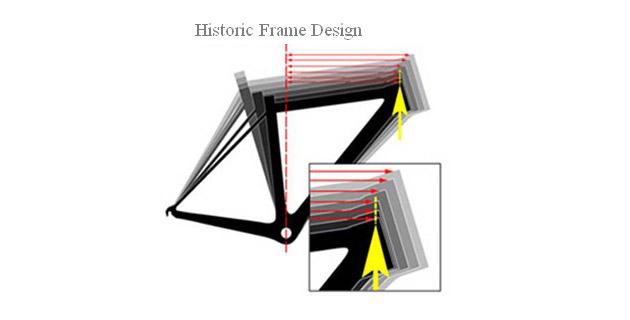
How do you know if a model truly gets smaller in its smaller sizes? Make sure that the head tube continues to move rearward as the frame sizes become smaller. Look for frame reach, not top tube length. The seat tube angle may or may not change. Make sure the headtube moves closer to the rider as sizes get smaller.
